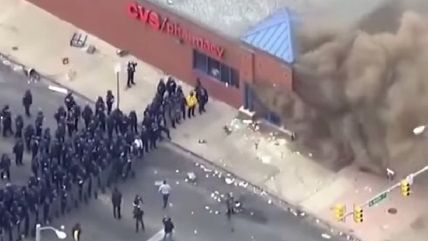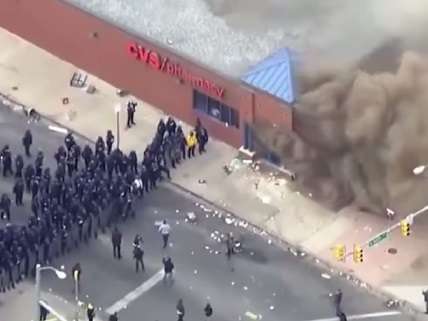The Baltimore Riots: A Case for School Choice?
Public schools fail the inner city youth


Would school choice reforms prevent or reduce future unrest in cities like Baltimore by improving the plight of poor minority teenagers? Some are making that case. Here was Charles Krauthammer on Fox News last night, according to National Review:
"There are essentially two problems. . . . One is single parenthood, and the other is the worst schools on earth,"? said Krauthammer on Tuesday's Special Report. "Of the first, we have no idea how to solve that. Of the second, we do. If you can'?t improve the schools, give the kids a choice to go to better schools. The parents begged to have that opportunity, but the teachers' unions won't allow it and thus the Democrats won't. If you want to do something, let them choose their schools."
This idea has merit. The traditional public school system fails inner city youth in two major ways—both of which reinforce the kind of problems on display in Baltimore.
First, inner city schools are just plain awful. As Terry Jeffrey pointed out in Townhall, the most recent information shows that the Baltimore school district spends about $18,000 per student and only achieves a reading proficiency rate of 16 percent for eighth graders. That's a lot of money wasted in pursuit of terrible result. When public schools can't even teach the vast majority of Baltimore's most vulnerable kids to read, the traditional education system is condemning them from a very young age to dim college and career prospects.
Second, the public school system increasingly turns mildly troubled young people into criminals thanks to a depressing trend of overcriminalization. Safety paranoia led administrators down the dark path of zero tolerance; classroom misbehavior that once would have resulted in detention now triggers a call to the cops, arrest, and expulsion. It's really no wonder black teens and 20-somethings distrust the police—consider the representative case of Kayleb Moon-Robinson, a black 11-year-old in Virginia who incurred disorderly conduct and felony assault charges for causing a bit of mischief. In a sane education system, teachers would work with Kayleb to improve his behavior, not strap him in handcuffs. And inner city streets are filled with teens who were arrested and expelled when they should have been counselled and reformed. This is almost the perfect system for creating a society of displaced, impoverished, lawless young people.
School choice would mitigate these problems by liberating poor minorities trapped in a cycle of failure. Still, there are limits to what any single reform could accomplish. Neal McCluskey, associate director of the Cato Institute's Center for Educational Freedom, told me that he expects school choice would certainly help, "but there are limits to what schools can fix."
"An almost iron law is that once you account for all sorts of things impacting kids outside of school—family income, culture, etc.—the effect of schools themselves are relatively small," he said in email to Reason. "So yes, a system of school choice would almost certainly provide a better education for many people for a lot less money, but it wouldn't solve deeper problems like poor nutrition or unstable families."
McCluskey noted that the drug war, which brings police into constant contact with non-violent offenders, accounts for a large share of the problem.
But that's really just an argument for implementing both reforms. When families have the freedom to send their kids to better schools—and when those kids have the freedom to make mistakes without going to prison—we'll have less rioting.
